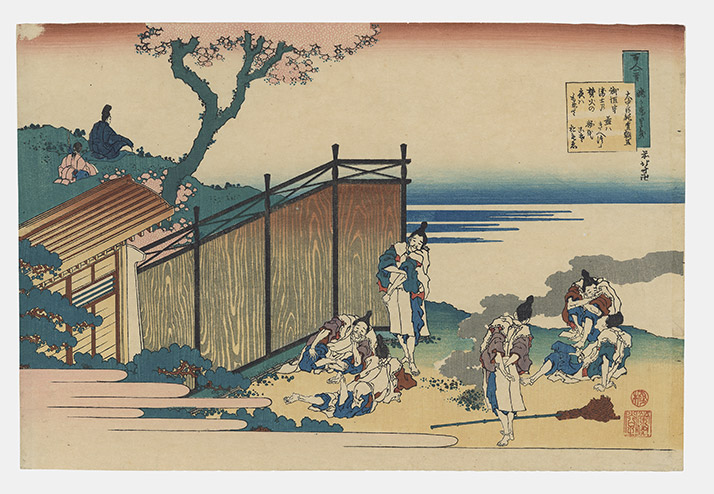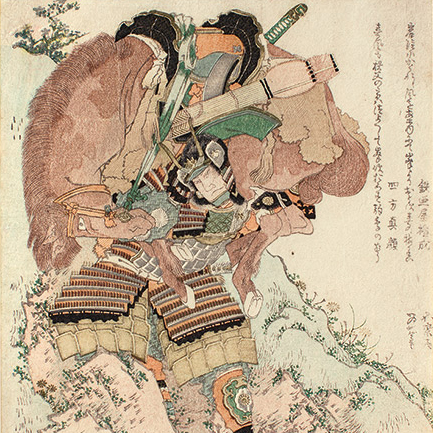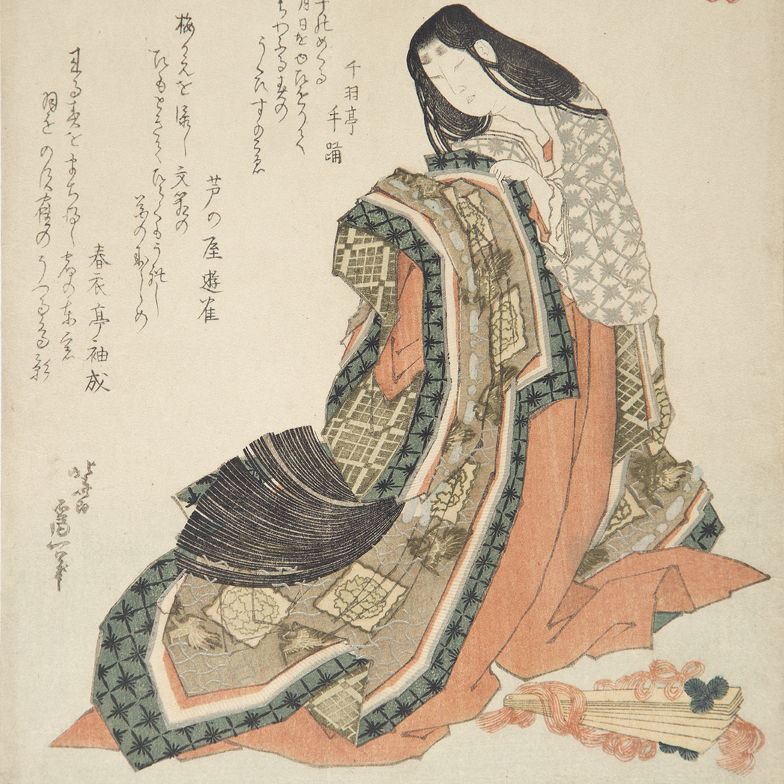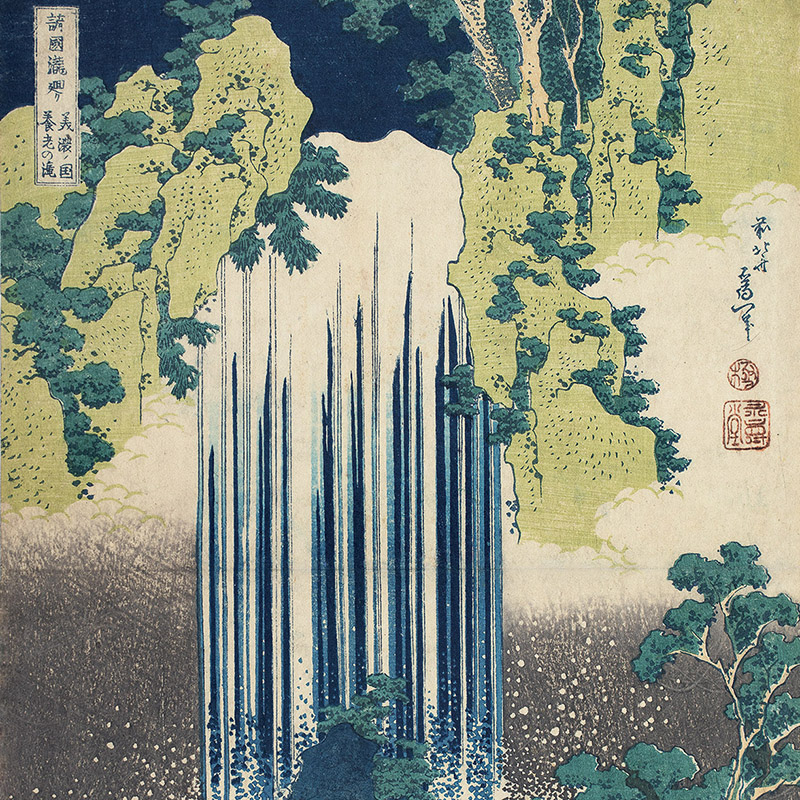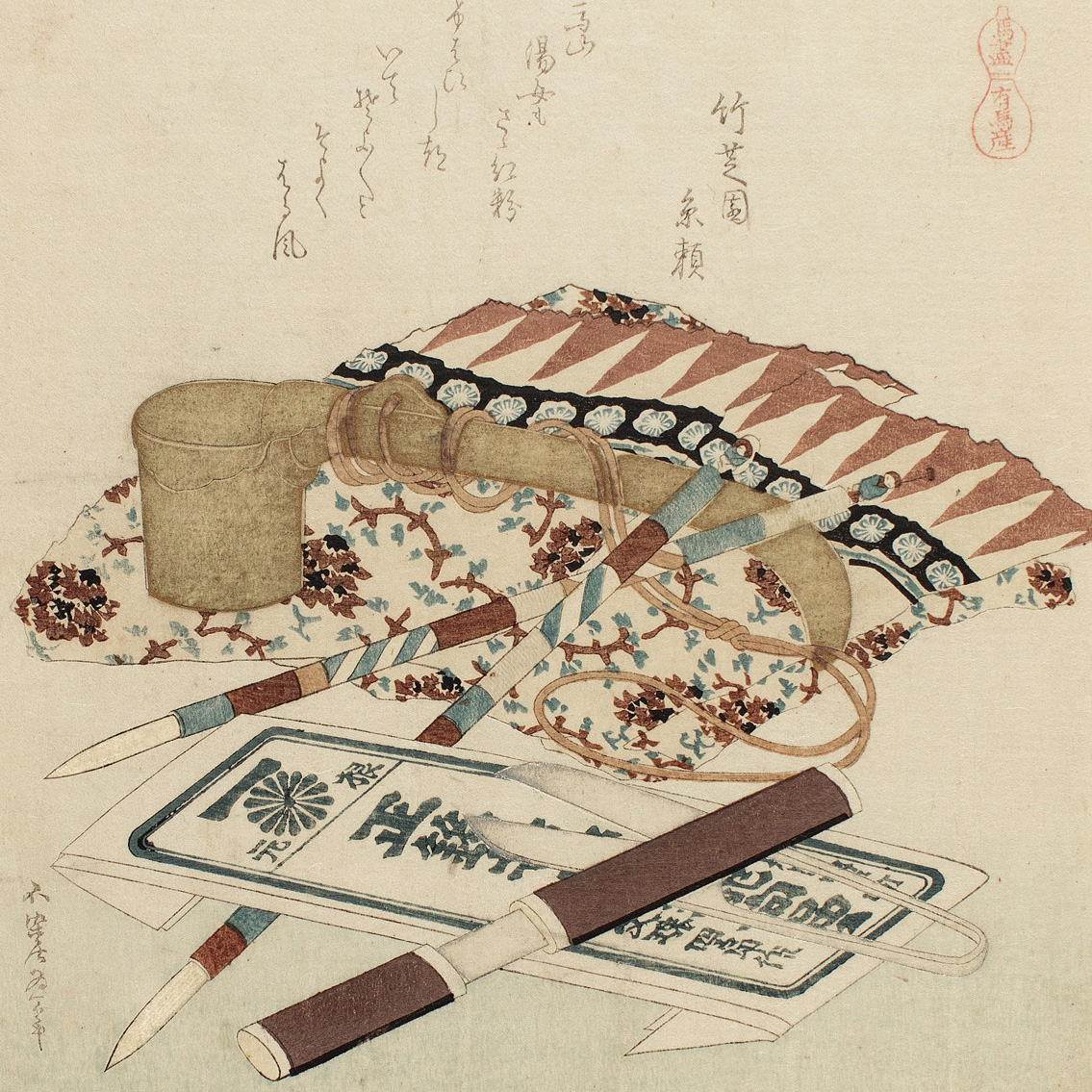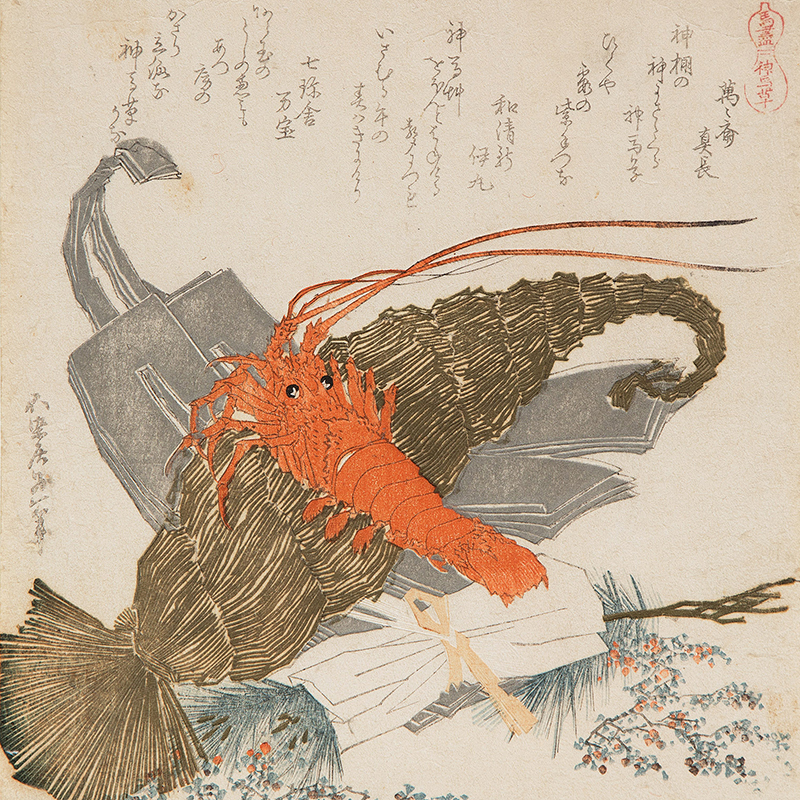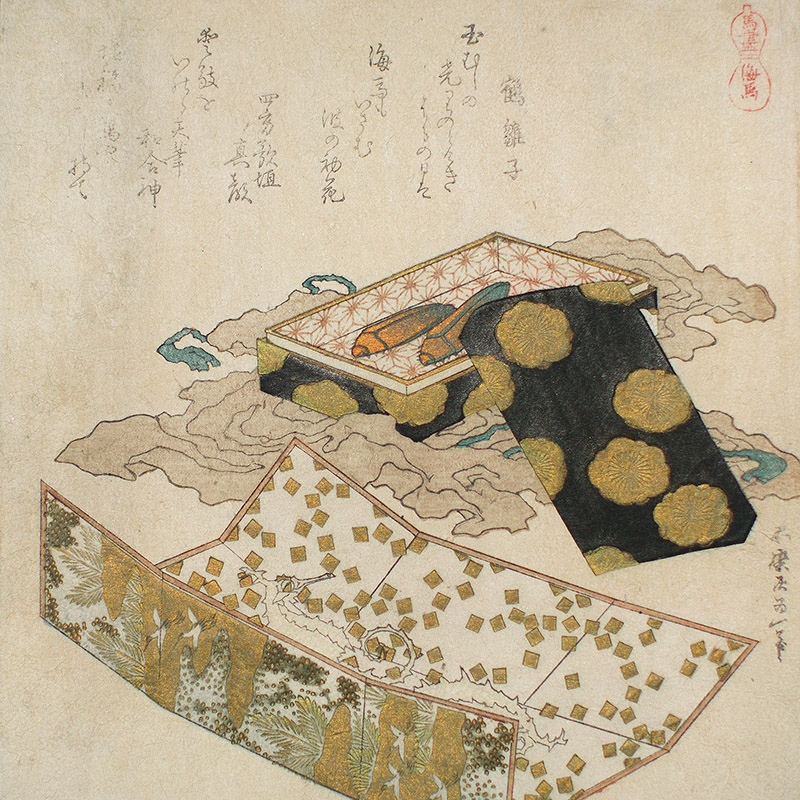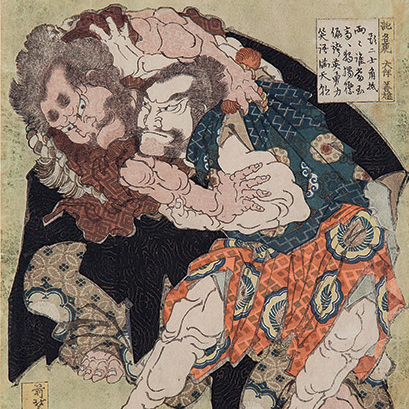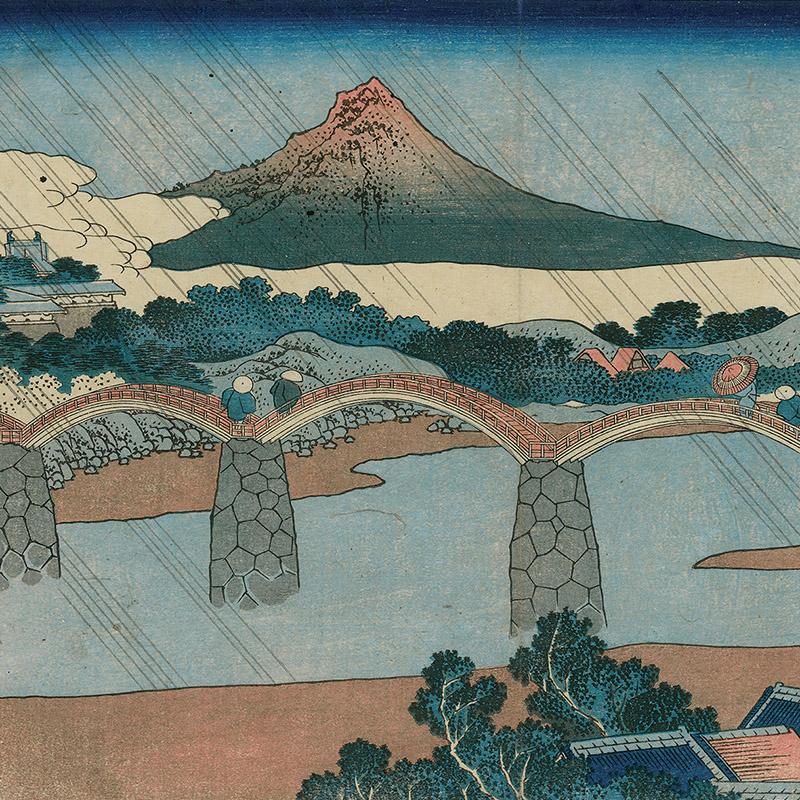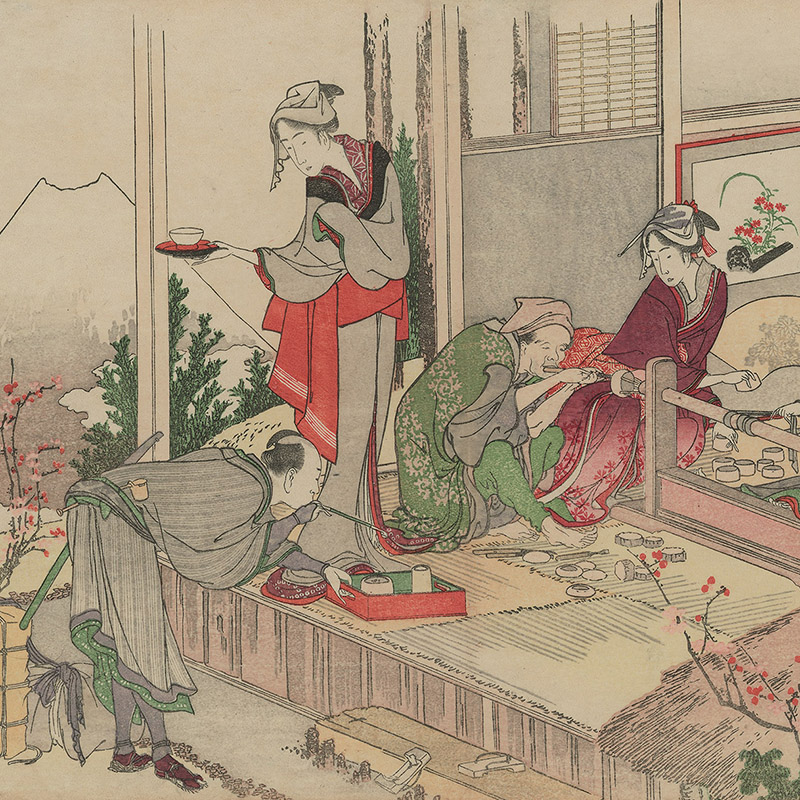Katsushika Hokusai
1760 - 1849
c. 1835-36
Horizontal ōban, 250 x 378 mm
Signed: Zen Hokusai manji (The manji seal black)
Series: One Hundred Poems explained by the Wet Nurse - Hyakunin isshu ubagaetoki
Published by Nishimuraya Eijudo and Iseya Eijudo c. 1835-36
Very fine early impression, fine colour and condition.
The poem by Onakatomi no Yoshinobu Ason is in the square cartouche.
The Hyakunin isshu is a classical anthology of one hundred Japanese waka by one hundred poets. It is one of the most famous anthology of poems in Japan.
Reference:
G. C. Calza, Hokusai, il vecchio pazzo per la pittura, 1999, Milan, cat. no. VI.12.6, p. 394.
Information on the master
Katsushika Hokusai, dominated the scene of the art of the Japanese print (Ukiyo-e) in the field of book illustration, drawing and painting. He was born in the Honjo district of Edo. His passion for art began at an early age; he was adopted by an illustrious family of artisans who introduced him to wood engraving. This influenced his career and at the age of 18 he entered at the studio of Katsukawa Shunso (1726-1793), who specialised in prints depicting the popular Kabuki theatre. Under the pseudonym of Shunro, around the 1780s, he got to know artists like Shigemasa (1739-1820) and Kiyonaga (1752-1815) who influenced his drawing of figures. Around 1790 he produced his first important prints which he signed Kako. He also produced fine Surimono. In 1797 he married and took the name Hokusai, becoming one of the foremost illustrators and artists of Japan. Among his most famous work are the ehon, books of images, as the 15 albums of drawings entitled Manga. The most celebrated of his prints series is The thirty-six views of Mount Fuji, early thirties. Amongst his many pupils: Shinsai, Hokuju, Hokuba, Hokkei, Shigenobu.
Other works of the master
